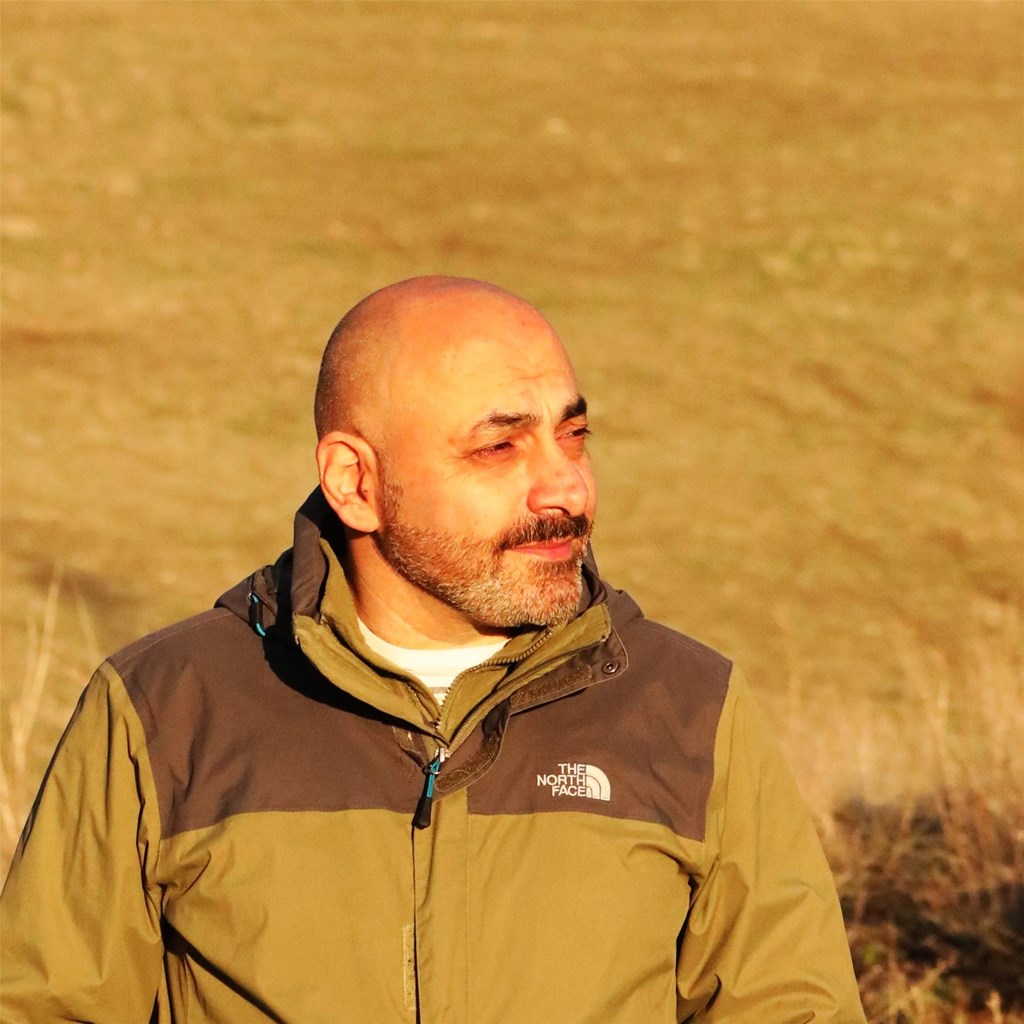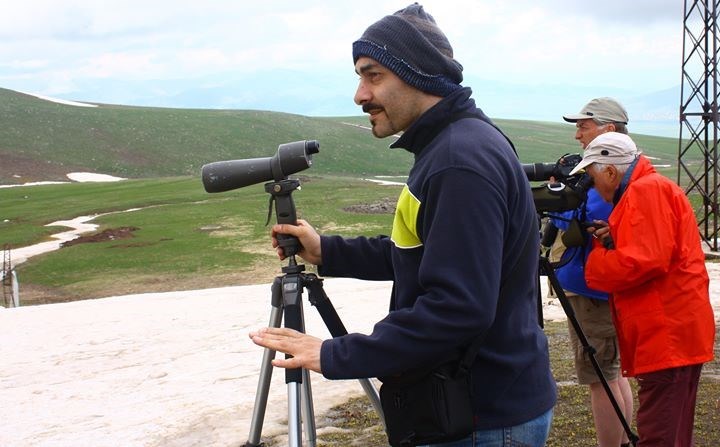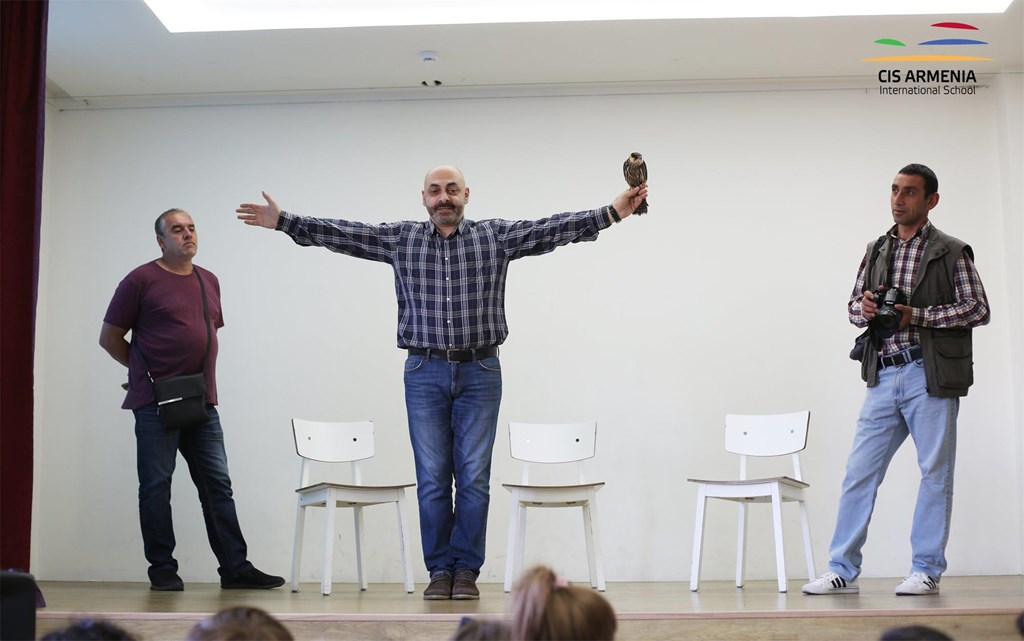Climbing to Vulture Conservation in Armenia
Posted on April 05, 2020 in Science

By Rebekah Smith, Science-Education Outreach Coordinator
Karen Aghababyan began his research on vultures in 2002 with Dr. Keith Bildstein, and upon invitation, Karen was welcomed at Hawk Mountain Sanctuary as an international conservation trainee in 2003. Karen says that this influential experience continues to benefit him in his career of studying raptors and endangered bird species in Armenia. After completing his traineeship and returning to Armenia, Karen continued with his career in raptor conservation by starting several programs in Armenia that are dedicated to conservation research and education.
In 2003, with the guidance of Dr. Keith Bildstein, Karen began two long-term studies regarding the statuses of bearded and griffon vultures in Armenia. He collected data from 2003 to 2008, which was used for a 2009 population status analysis for both species, which was included in the Red Book of Animals of Armenia (2010). Karen continued to foster this long-term monitoring program, and, in February 2020, his research was published again, with a focus on data collected between 2009 and 2019 for the bearded vulture study and an emphasis on the full 2003 to 2019 time period for the griffon vulture study. “The state of Griffon Vulture (Gyps fulvus) in Armenia” was published in the journal Tichodroma and “The State of Bearded Vulture, Gyptaetus barbatus in Armenia” was published in Bird Census News 2020. Both articles are accessible on ResearchGate. These publications will update the previous evaluations of the state of bearded vultures and griffon vultures in Armenia that Karen contributed to almost 11 years ago.

In the new assessments, Karen used data that he, colleagues, and students collected to report numbers of breeding pairs and breeding success. In the griffon vulture study, Karen and his colleagues quantified colonies and breeding pairs by surveying for occupied nests annually, March through April and again, in July. They measured breeding success by recording the number of fledglings per occupied nest. They also interviewed many people during the study including hunters, veterinarians, offline and online markets, farmers, and the State Inspectorate for Nature Protection and Mineral Resources. They found that the population of griffon vultures in the country has increased moderately. The ultimate breeding success rate increased from 71% in 2003 to 79% in 2019. This is an exciting move in the right direction for Armenia, but Karen and his colleagues recommend that the species remains listed as Vulnerable on the IUCN Red List. The team also estimated, using information collected during the interviews, that the current threats to these raptors mainly consist of trophy hunting and capture for the pet trade. Policy change, increased penalization for illegal shooting and trapping, and improved public outreach are some of the recommendations Karen and his colleagues have made as a result of their research.
Karen and his colleagues were able to determine that bearded vulture numbers are also in slight increase over the past 10 years. The population in Armenia now consists of 11-12 breeding pairs, whose nesting sites were monitored in order to determine breeding success. They also conducted road surveys to estimate the numbers of non-breeding individuals and even climbed to the nests of seven pairs to make diet observations. The current threats to griffon vultures in Armenia also apply to bearded vultures, resulting in a similar set of recommendations for both species. Karen and his colleagues also suggest that the status of bearded vultures be raised from Vulnerable to Endangered in accordance with IUCN criteria. Even though they’ve observed a slight population increase, the number of breeding pairs are likely not numerous enough to sustain the species unless the positive trajectory continues. Both studies spanned over the entire country of Armenia, and both species of vultures nest on high cliffs, caves, grottos, and canyons, making this research especially difficult and impressive. Surveying nests, fledgling success rates, and observing feeding behavior sometimes required climbing to these hazardous locations. Both studies required the assistance of over 40 people. Karen says that he also uses this research as an opportunity to train students, supporting the future generation of raptor conservationists.

The valuable information generated by this research is used to measure population stability of these raptors. Assessments of population stability can be used to make recommendations for legislative decisions that will help to ensure beneficial raptor species, such as these vultures, continue to have a sustainable presence throughout the country. Karen has also been serving as an advisor to the Armenian Minister of the Environment as the foremost expert in Armenian raptor research. It is inspiring to see scientists and politicians working together to protect and conserve raptors.
Karen’s accomplishments reflect Hawk Mountain’s ability to foster and inspire raptor conservation abroad by training the planet’s next generation of raptor conservation scientists. The long-standing impact of the trainee program is evident in Karen’s continued involvement in the conservation community. In addition to his research accomplishments, Karen became a director of the Acopian Center for the Environment in the American University of Armenia. Karen has also founded BirdLinks Armenia, Armenia’s largest and strongest organization in bird study and conservation. He leads the Armenian Birdwatching Association and has visited schools in his community to give presentations about raptor and bird conservation. Throughout all of his career endeavors, Karen says that Dr. Keith Bildstein remained a mentor to him until Keith’s retirement in 2018. Karen continues to stay in touch with Hawk Mountain through emails to Dr. Laurie Goodrich, and we hope to continue to hear about Karen’s accomplishments as a raptor conservation leader in Armenia.